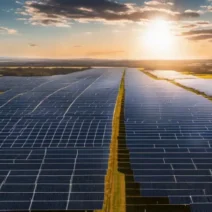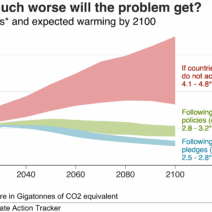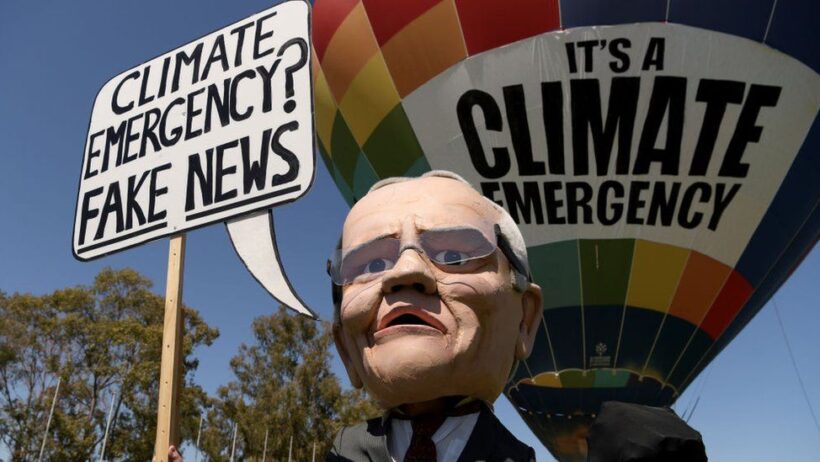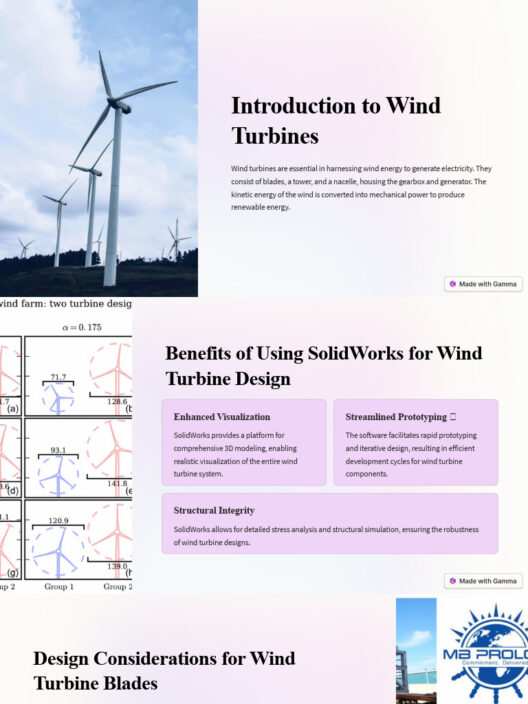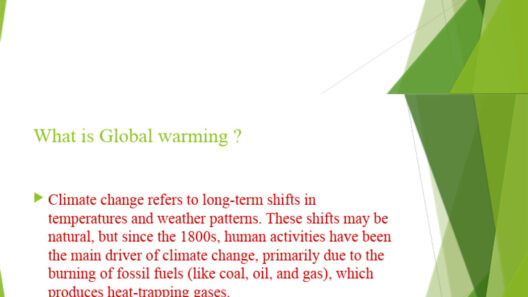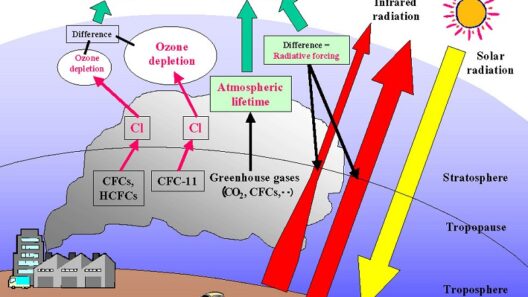Global warming has long been a contentious issue, with debates often polarizing opinions. However, as the evidence mounts and scientific consensus forms, understanding the complex mechanisms of climate change becomes increasingly imperative. This article delves into the facts surrounding global warming, addressing key concerns, common misconceptions, and the undeniable reality of climate change.
The Definition of Global Warming
At its core, global warming refers to the gradual increase in Earth’s average surface temperature, primarily due to the accumulation of greenhouse gases in the atmosphere. These gases—such as carbon dioxide, methane, and nitrous oxide—are primarily generated by human activities, including fossil fuel combustion, deforestation, and industrial processes. Understanding this phenomenon requires unraveling the intricate relationships between these gases, temperature changes, and environmental impacts.
Delving into the Greenhouse Effect
The greenhouse effect is a crucial process that underpins the concept of global warming. Solar radiation reaches the Earth’s surface, where it is absorbed and subsequently re-radiated as infrared energy. Greenhouse gases trap some of this re-radiated energy, maintaining the planet’s temperature within a range that supports life. While this effect is natural and necessary, human activities have intensified it, leading to higher atmospheric concentrations of these gases.
For instance, data shows that atmospheric carbon dioxide concentrations have risen dramatically since the Industrial Revolution, from about 280 parts per million (ppm) to over 410 ppm today. This escalation raises questions about the sustainability of current practices and urges a reevaluation of energy consumption and conservation methods.
Exploring the Scientific Consensus
The overwhelming majority of climate scientists agree on the reality of climate change. Reports from esteemed organizations, including the Intergovernmental Panel on Climate Change (IPCC), highlight that human activity is the primary driver of recent temperature increases. This consensus is rooted in rigorous research, extensive climate models, and continuous observations over decades.
Addressing Skepticism: Common Misconceptions
Despite the robust scientific understanding of climate change, skepticism persists. Several common misconceptions contribute to this sentiment:
1. **“Climate has always changed.”**
While it’s true that Earth’s climate has undergone natural variations throughout history, the current rate of change is unprecedented. Geological records indicate glacial cycles over millennia, but the current warming trend is happening at an alarming pace, primarily linked to anthropogenic activities.
2. **“It’s just weather, not climate.”**
Distinguishing between weather and climate is essential. Weather represents short-term atmospheric conditions, while climate encompasses long-term trends and averages. Notable incidents of extreme weather—like heatwaves, hurricanes, and droughts—are linked to larger climatic shifts, further validating the reality of global warming.
3. **“Models are unreliable.”**
Climate models have faced scrutiny, yet they remain invaluable tools for predicting future trends. Various models have consistently converged on similar outcomes, projecting a range of possible scenarios based on different levels of greenhouse gas emissions. Embracing these models allows for informed decision-making regarding climate policy and mitigation strategies.
The Consequences of Inaction
Failing to acknowledge the realities of climate change carries dire consequences. Rising sea levels, increased frequency and intensity of extreme weather events, and significant impacts on biodiversity and ecosystems are just a few of the anticipated outcomes. The financial implications are equally staggering; economic losses related to natural disasters have risen exponentially, straining both local and global economies.
Charting a Sustainable Path Forward
Addressing global warming requires a multifaceted approach. Efforts must be concentrated on reducing greenhouse gas emissions, transitioning to renewable energy sources, and enhancing energy efficiency. Policymakers, industry leaders, and individuals all play pivotal roles in this endeavor.
Investments in clean technologies—such as solar, wind, and geothermal energy—are critical for reducing dependency on fossil fuels. Moreover, public transportation and electric vehicles offer promising avenues for emission reduction in urban environments.
Additionally, reforestation and sustainable land management practices can help sequester carbon, further mitigating climate change impacts. Engagement in global climate agreements, local initiatives, and community-driven projects can harness collective action, emphasizing the role of individual agency in confronting this existential threat.
Education and Awareness: Empowering Change
Raising awareness about the realities of climate change is paramount. Communities must be informed about the science behind global warming and the potential solutions available at their fingertips. Schools, organizations, and governments should prioritize environmental education, fostering an informed public capable of driving sustainable practices.
Moreover, leveraging social media and digital platforms can amplify the voices of climate advocates, making it possible to reach wider audiences and ignite the desire for change in everyday individuals. When communities are equipped with knowledge, they are more likely to demand policies that protect the environment for future generations.
Conclusion: A Call to Action
As the impacts of climate change become increasingly evident, the urgency of collective action cannot be overstated. Understanding the science behind global warming equips individuals with the tools needed to navigate this complex issue critically. Acceptance of climate change as a real and immediate threat is the first step towards implementing meaningful solutions.
Global warming is not a mere myth; it is a scientifically backed reality that requires our attention and action. Faced with this challenge, the question is not whether we can afford to address the problems posed by climate change, but rather whether we can afford not to. The future of our planet depends on the decisions we make today.
